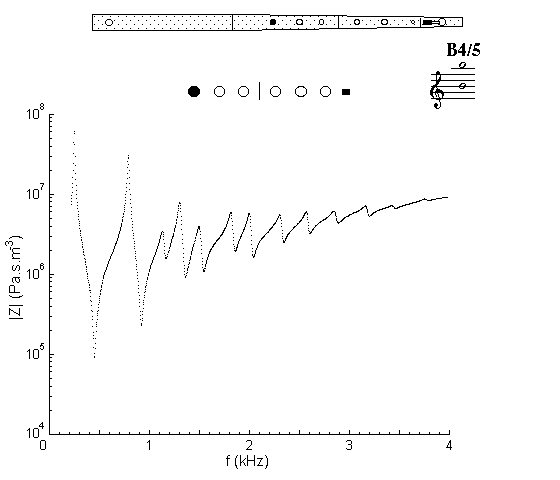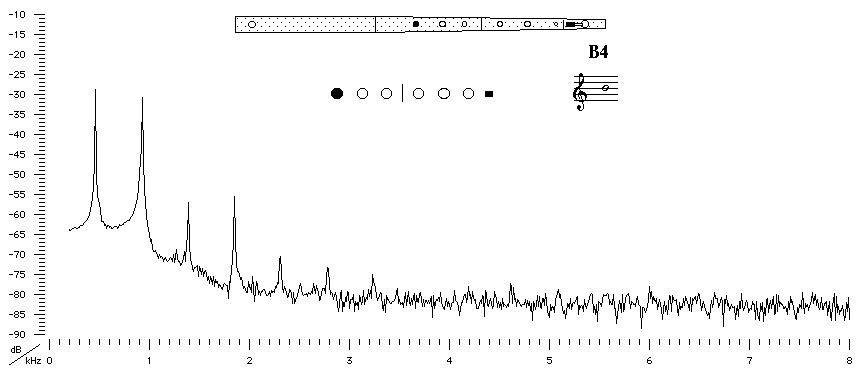| Acoustics of baroque, classical and modern flutes |
baroque flute |
B4 |

|
Acoustic and Fingering Schematic Non-specialist introduction
to acoustic impedance |
From E4 to B4 and E5 to B5, the simple fingerings (i.e. those that do not involve cross fingering) serve for two notes. The flutist uses the same fingering for B4 and B5, but changes the speed, length and shape of the jet. The absence of cross fingerings allows the second minimum to be harmonic (hence two strong harmonics in the sound spectrum).
The series of open holes acts as a filter to pass high frequencies (the wave doesn't reflect as well for high frequencies, so the instrument doesn't resonate as well). For this flute, the effect occurs not far beyond 1 kHz (it depends on the size of the holes). This effect diminishes the size and regularity of minima (and maxima), and so reduces the power at high frequencies. On the classical flute, the effect appears at around 1.5 kHz, and it is above 2 kHz on the modern flute. Hence only two minima are harmonic and so only two harmonics in the sound spectrum are strong. These suffice, however, to give a brighter timbre than that of the cross fingered notes nearby.

Sound spectrum
of a baroque flute played using fingering for B4.
![]()
![]()
![]()
![]() You can hear B4
played by Matthew Ridley.
You can hear B4
played by Matthew Ridley.
| Acoustic measurements are available for these flutes - modern B, modern C, classical C, classical D, classical flared, baroque Sound clips are available for modern B, classical flared and baroque |
To compare flutes, it is easiest to open a separate browser window for each instrument. |